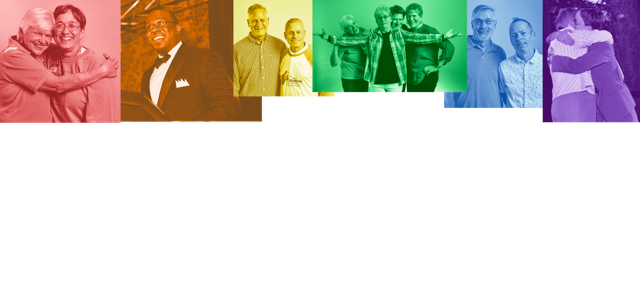The LGBTQ Rights Movement
In the second half of the 20th century, activists brought ideas of LGBTQ equality into national circulation, inspiring LGBTQ people to connect, come out, and organize.
Months after the Senate Investigations Subcommittee released its decision in 1950, a group of gay men formed the Mattachine Society in Los Angeles, California, becoming the second gay rights organization in the United States – and the only one in operation at that time – and the first to have multiple branches and a national membership. The secrecy of the society and its affiliation with communism reduced its ability to reach politically moderate and conservative LGBTQ people, which inspired internal division.
In 1953, its members decided on visible "accommodation to straight norms as critical to the [homophile] movement's success."1 Such visibility challenged "the insistence of the dominant culture that homosexuals remain silent and anonymous" while simultaneously showing that homosexuals could uphold the values of the dominant culture.2 In the context of the Cold War and the purge of homosexuals from the federal government, that single-issue focus helped the society reach more conservative audiences.
Around the same time of the Mattachine Society's reformation, some members left and began publishing the first gay magazine, ONE. In 1955, the Daughters of Bilitis formed, the first recognized lesbian organization and sister organization to the Mattachine Society. Together the three groups worked nationally to connect, educate, and advocate for opportunities for gay and lesbian people.3
In 1961, the national Mattachine Society dissolved, leaving branches to self-determine. Soon after, Frank Kameny and Jack Nichols formed the Mattachine Society of Washington D.C. Kameny adopted a more militant approach without sacrificing visibility, setting a bold precedent for LGBTQ activism on the East coast.4 In 1964, Randy Wicker of the Homophile League of New York and other activists organized the first gay rights protest in the United States, a picket outside the Armed Forces Induction Center to challenge the military's discrimination against homosexual people. In the following year, Kameny and other activists organized the first LGBTQ rights picket in Washington D.C. to challenge sexual discrimination in the federal government.
During the 1950s and 1960s, police raids of gay and lesbian bars were a frequent form of oppression of LGBTQ people and culture, usually resulting in arrests or suspensions of liquor licenses. However, on June 28th, 1969 at the Stonewall Inn in Greenwich Village, New York, young queer people fought back against the police for the first time, sparking a riot, the first large and uncompromising expression of the LGBTQ community. After the Stonewall Uprising, activists formed the Gay Liberation Front in New York City and inspired formations of similar groups across the U.S. and internationally, including the Rochester Gay Liberation Front in 1970.
The Stonewall Uprising triggered new support for LGBTQ visibility, and a range of legal and cultural gains for LGBTQ people followed during the 1970s. The American Psychiatric Association removed homosexuality from its list of mental illnesses in 1973. In 1974, Elaine Noble won a seat in the Massachusetts state legislature, becoming the first out lesbian to win public office. Building on the Norton v. Macy decision, in 1975, the Supreme Court of the United States ruled that the Civil Service Commission could not discharge or exclude homosexual people from service based on their sexual orientation alone.5 The first National March on Washington for Lesbian and Gay Rights was in 1979.
During the 1980s, the early association of HIV/AIDS with gay men, who were some of the first to be diagnosed with the new disease, led to increasing homophobia and isolation of gay men. That early association of HIV/AIDS – originally termed Gay-Related Immune Deficiency – proved consequential, delaying effective public health campaigns and slowing research into treatments. As a result, HIV/AIDS took many lives, weakening the movement for LGBTQ liberation and angering partners who had no legal right to participate in decision-making over their loved ones’ medical treatment or end of life choices. At the same time, as sociologist Nicole Raeburn notes, "the AIDS crisis and the life-saving necessity of speaking out pushed many out of the closet," which helped LGBTQ people connect and create the courage and skills needed for organizing in their workplaces.6
1 Vaid, "Legitimation, Liberation, and History," in Virtual Equality: The Mainstreaming of Gay and Lesbian Liberation.
2 Meeker, “Behind the Mask of Respectability,” 88.
3 Meeker, “Behind the Mask of Respectability.”
4 Cain, “Litigating for Lesbian and Gay Rights,” 1561-1562.
5 Lewis, “Lifting the Ban on Gays in the Civil Service.”
6 Raeburn, "The Rise of the Corporate Workplace Movements," Changing Corporate America from inside out: Lesbian and Gay Workplace Rights, 33.


